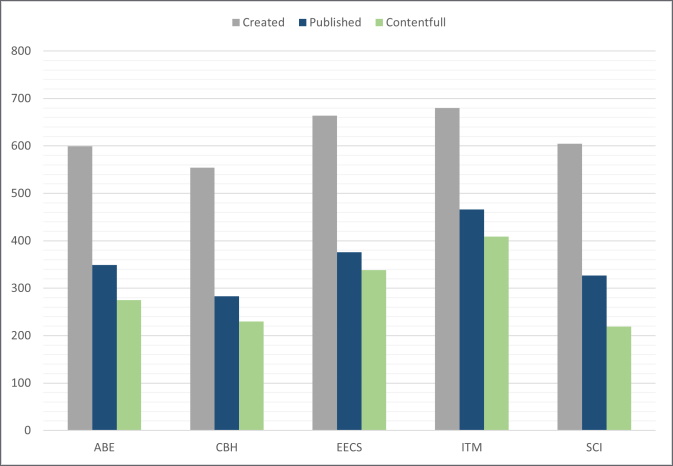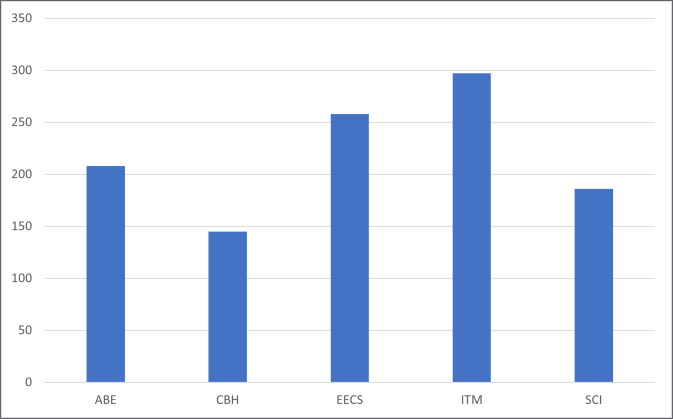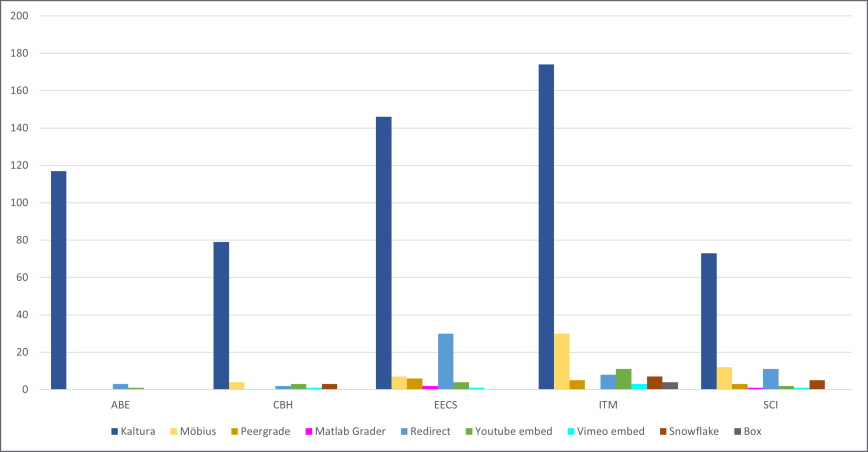2020: E-learning in figures
Here you can find numbers and statistics for 2020 usage of the systems that are maintained by the E-learning object. The statistics are retrieved mid-December 2020 so some numbers may have increased after that but the general situation is not affected. E-learning is continuously using data driven development and the figures presented here are only a selection of the data that decisions are based upon.
Note that the numbers are published twice (as a table and diagram), this to increase the accessibility of the information.
Course rooms in Canvas
Course rooms in Canvas are created automatically for every course run and it is the teacher of the course that actively has to choose to publish the course room and make it available for the students. Some course runs are studying together and using the same course room. In that case the students are moved into one of the course room and the other remains unpublished and the publishing rate is affected but to a very low extent.
Diagram: course rooms in Canvas per school

"Contentfull" indicates courses where the sum of the number of assignments, modules and quizzes are more than 3.
| School | Created | Published | Contentfull |
|---|---|---|---|
| ABE | 599 | 349 | 275 |
| CBH | 554 | 283 | 230 |
| EECS | 664 | 376 | 338 |
| ITM | 680 | 466 | 409 |
| SCI | 605 | 327 | 219 |
"Contentfull" indicates courses where the sum of the number of assignments, modules and quizzes are more than 3.
Course surveys (LEQ)
Students must be given the possibility to give their feedback and suggestions on the course design and implementation. Course surveys using LEQ are created on the initiative from the teachers in the course but they can also perform a survey using pen and paper or other tools for collecting the feedback from the students. The number of course surveys using LEQ is lower than the total number of courses indicating that there are a large number of courses using other ways than LEQ of collecting and evaluating courses. The LEQ survey is however most likely the most commonly used way.
The number of course surveys has inreased since 2019, but the response rate has decrease somewhat even if it still can be considered above average.
Diagram: course surveys using LEQ per school

| School | Number |
|---|---|
| ABE | 208 |
| CBH | 145 |
| EECS | 258 |
| ITM | 297 |
| SCI | 186 |
Total number of course surveys with LEQ: 1094.
Diagram: response rate for LEQ per school

The response rate average is 20% for all surveys and the difference between schools are relatively small. The response rate is considered above average for the situation.
| School | Response rate % |
|---|---|
| ABE | 23.9 |
| CHB | 18.6 |
| EECS | 21.6 |
| ITM | 21.3 |
| SCI | 15.8 |
The response rate average is 20% for all surveys and the difference between schools are relatively small. The response rate is considered above average for the situation.
External applications (LTI-apps) in Canvas
KTH are providing a number of external applications, known as LTI-apps, as a complement and extension to Canvas. The use of Kaltura stands out in all schools because it is the only one that all employees are licensed for and because it handles video sharing, something that became very important during the pandemic. There are licenses for Möbius, but they must be requested. The remaining applications have been activated when teachers requested them.
Diagram: courses per school with specific external application activated

| School | Kaltura | Möbius | Peergrade | Matlab Grader | Redirect | Youtube embed | Vimeo embed | Snowflake | Box |
|---|---|---|---|---|---|---|---|---|---|
| ABE | 117 | 0 | 0 | 0 | 3 | 1 | 0 | 0 | 0 |
| CHB | 79 | 4 | 0 | 0 | 2 | 3 | 1 | 3 | 0 |
| EECS | 146 | 7 | 6 | 2 | 30 | 4 | 1 | 0 | 0 |
| ITM | 174 | 30 | 5 | 0 | 8 | 11 | 3 | 7 | 4 |
| SCI | 73 | 12 | 3 | 1 | 11 | 2 | 1 | 5 | 0 |
Plagiarism checking with Ouriginal (previously known as URKUND)
Total documents reviewed: 94 000.
Number of users viewed document: 743.
Ouriginal can be used as a standalone web service as well as an integrated service in Canvas where the assignments are connected to Ouriginal. The figures here apply to both ways but where the documents checked via Canvas make up the majority and is also an increasing number.
Both the number of reviewed documents and the number of users have noticably increased since 2019.
